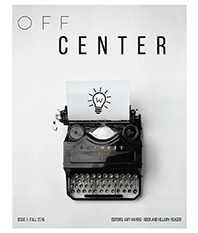RES 4: MLA Quick Guide
Dynamic PDF: MLA Quick Guide
What is MLA?
The Modern Language Association (MLA) is an international organization that determines formatting standards for work in the humanities. If you are a student, this means that MLA will supply the required format for information such as in-text citations and the Works Cited page for essays you will write in your humanities courses, including English. You may find more detailed instructions about MLA style in your writing handbook.
Why do citations matter?
Whenever you refer to someone’s words or ideas, whether you are paraphrasing, summarizing, or quoting, you have a responsibility to your readers to cite your source. If you do not cite your source’s words or information, you are plagiarizing. Whether intentional or accidental, plagiarism has consequences (see MTSU’s definition of plagiarism). Understanding your citation style can go a long way toward helping you write responsibly.
What is an in-text citation?
Writers use in-text citations when they make reference to someone else’s ideas through paraphrasing, summarizing, or quoting. This allows your readers to refer to your Works Cited page to see where the selected information came from.
MLA In-text citations typically include:
- the author’s name
- the page number(s) referenced
The name may appear either in the sentence itself or in the parentheses following the quotation, paraphrase, or summary, but the page numbers, if they exist, always appear in parentheses. For example:
- Although Watson’s theories have been “long-lived,” new ideas are born each day (Jones 29).
- Jones asks, “Are these rules necessary?” (29).
Also, note the use of signal phrases and how the quoted text does not begin a sentence. Instead, the writer signals to the reader that outside information is about to be brought into the paper.
What if the source has no author?
If the source has no author and is still reliable, use and abbreviated version of the work’s title or whatever information starts the corresponding Works Cited entry. For example:
- An anonymous critic once argued that Zinsser’s own writing was full of clutter (“Get to the Point” 89).
What if the source has no page numbers?
If the source is web/electronic, it may not have page numbers. If paragraphs/sections are numbered, refer to the paragraph or section. Abbreviate par(s). for paragraphs and sec(s) for sections:
- Alston describes three types of rubrics for evaluating customer service (pars. 2-15). Hilton and Merrill provide examples of effective hyperlinks (sec. 1).
What is a “Works Cited” page, and how do I create one?
The Works Cited section lists every source referenced in your text. If you didn’t cite it in your paper, don’t add the source to your Works Cited page. The purpose of the Works Cited page is to provide a roadmap to your sources so that other scholars or researchers can find them. This means that, as a writer, you need to provide as much information as you can about where and how to find a source.
Scholarly sources include a variety of media, but they all should have similar basic information, such as an author, a title, a date of publication, or a publisher, and which may be found in either one or two “containers.” The first container is where the information can be found originally: whether in a book, a journal, or on a website. These are all primary containers. Secondary containers are places where the original information may have been re-published, such as in an online database. MLA provides a template to help you construct works cited entries. Visit MLA quick guide for more information.
Sample Citations in MLA Style:
Book/novel: John Steinbeck’s The Grapes of Wrath
Example for this book:
- Steinbeck, John. The Grapes of Wrath. Penguin, 1996.
Notice the details of the entry:
- The last name comes first
- The author’s first name is provided second
- The title is italicized
- The punctuation changes (period after author and title, comma after the publisher, and period at the end of the citation)
The MLA Style Guide manual and the Purdue OWL are also great resources that will show you how to format all primary and secondary containers like books, anthologies, videos, poems, plays, academic journal articles, and so on.
Note: Citation generators like EasyBib are tempting to use and may even be helpful in getting started, but be aware that technology can cause mistakes. Furthermore, not all generators are up to date with current MLA editions. Always double check your citations.
Note: Information in this document comes from the MLA Handbook (8th ed.), published by the Modern Language Association (style.mla.org).
Office Phone
(615) 904-8237
Location
Walker Library, Room 362
Address:
Read about our 45th Anniversary event and take a look at our growing digital archive!



